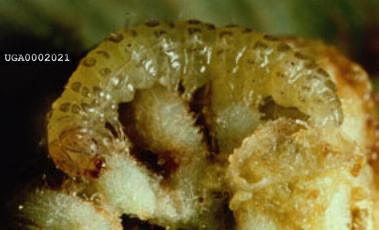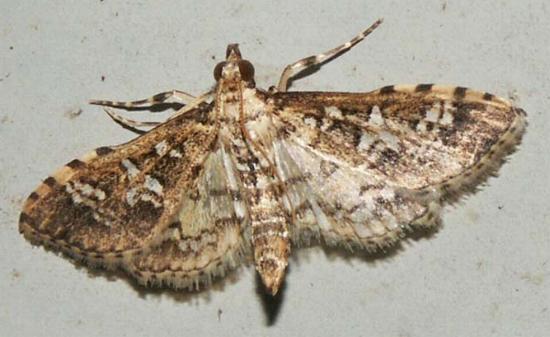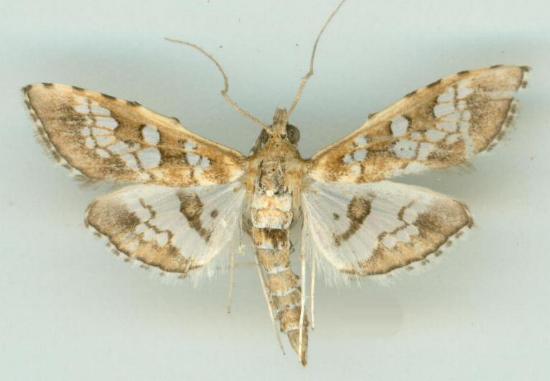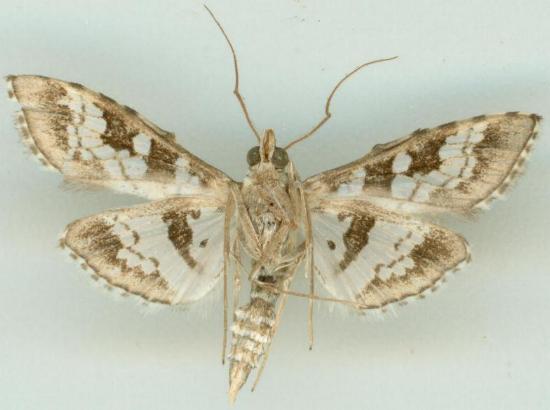
| Salvinia Moth (one synonym : Lepyrodes nicaeusalis Walker, 1859) SPILOMELINAE, CRAMBIDAE, PYRALOIDEA | (donherbisonevans@yahoo.com) and Stella Crossley |

(Photo: courtesy of
USDA Agricultural Research Service,
and Bugwood.org)

| Salvinia Moth (one synonym : Lepyrodes nicaeusalis Walker, 1859) SPILOMELINAE, CRAMBIDAE, PYRALOIDEA | (donherbisonevans@yahoo.com) and Stella Crossley |

(Photo: courtesy of
USDA Agricultural Research Service,
and Bugwood.org)
This Caterpillar is yellowish with a brown head, and has rows of dark spots across the back of each segment. It lives in a silk web constructed on top a foodplant leaf. The caterpillar grows to a length of about 2 cms.
It is a native of North and South America, but was introduced deliberately into Australia to control its foodplants :
These are aquatic weeds which can block tropical waterways. It has been studied in the USA for similar purposes. The moth was released at three sites in Australia around 1987, where it became established and dispersed about 170 km in 20 months. However, control of the water weeds was not achieved, and the caterpillars did not reduce plant growth permanently at any study site.

The adult moth is pale brown with multiple white markings outlined and transected in dark brown. It has a wingspan of about 2 cms.

The caterpillar is attacked by several parasites which may limit its population growth, including the wasps from BRACONIDAE:

The moth has been reported in
and in Australia: the moth may now be found in :
Further reading :
Ian F.B. Common,
Moths of Australia,
Melbourne University Press, 1990, p. 72.
Achille Guenée,
Deltoïdes et Pyralites,
in Boisduval & Guenée :
Histoire naturelle des insectes; spécies général des lépidoptères,
Volume 9, Part 8 (1854), pp. 227-228, No. 194.
Buck Richardson,
Tropical Queensland Wildlife from Dusk to Dawn Science and Art,
LeapFrogOz, Kuranda, 2015, p. 48.
 caterpillar |  butterflies |  Lepidoptera |  moths |  caterpillar |
(updated 6 August 2013, 12 September 2025)